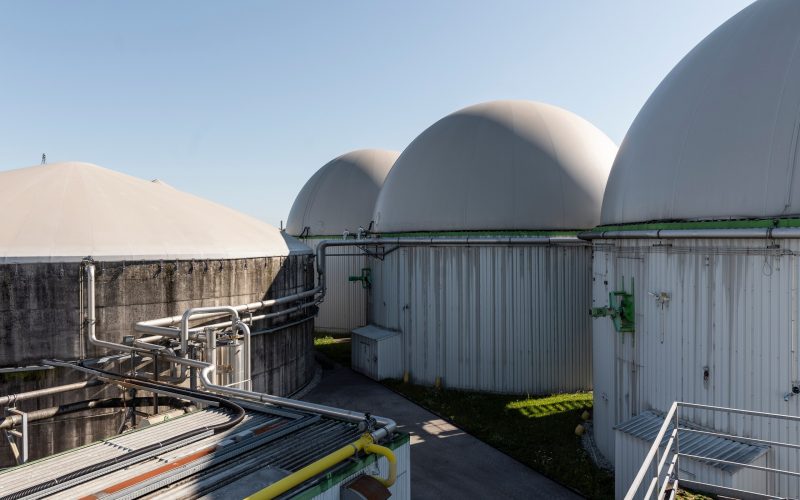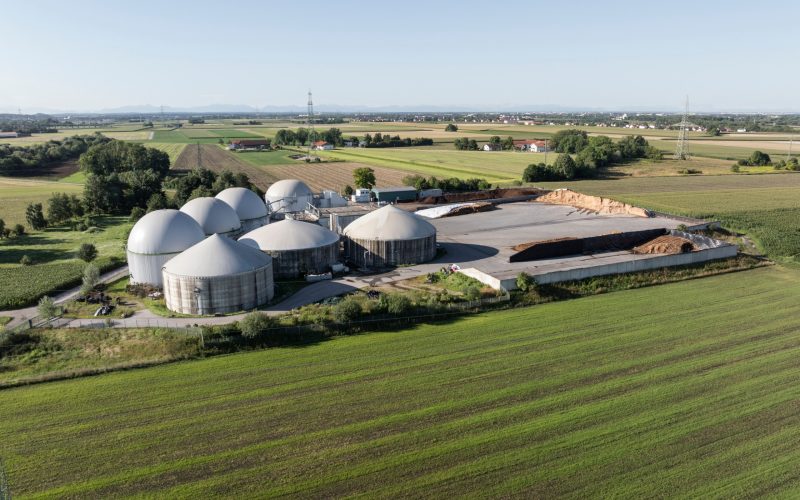Status and prospects of biomass use for energy in the USA
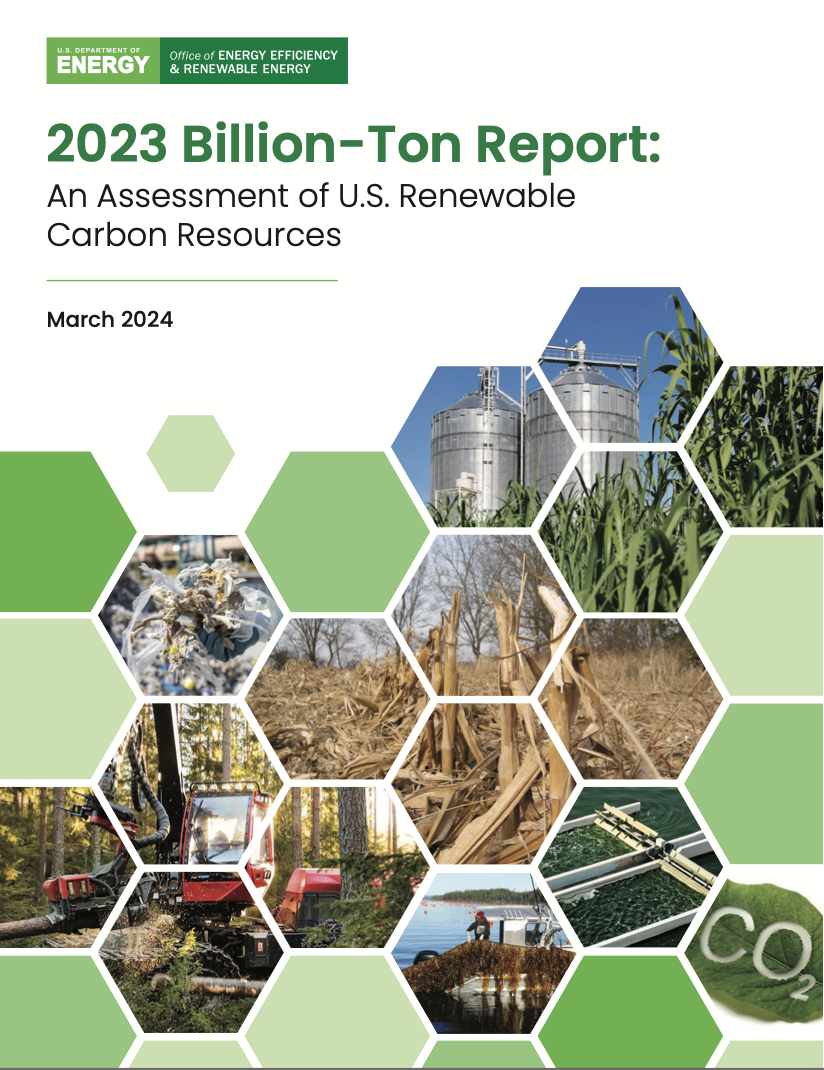
In March, the US Department of Energy published an important document “2023 Billion-Ton Report: An Assessment of U.S. Renewable Carbon Resources“, and our expert Semen Drahniev highlighted the main points of the material for the SAF platform.
Read the full article on the SAF platform.
This report assesses the potential of renewable biomass resources to support the US Department of Energy’s goals of replacing fossil fuels with renewable, biogenic carbon resources that, if managed effectively, have a lower climate impact.
In 2022, bioenergy became the largest source of renewable energy in the United States, accounting for approximately 5% of the country’s energy production.
Demand for renewable fuels is growing, especially in the aviation, marine and rail transport sectors.
On SAF, read about:
- Consumption of primary energy;
- Biofuel for transport;
- Heat and electricity from biomass;
- Total volumes of biomass consumption for energy.
Several important theses
From 2014 to 2022, coal consumption decreased by approximately 45% (from 19.0 to 10.3 EJ), and natural gas consumption increased by approximately 21.9% (from 28.9 to 35.2 EJ).
Since 2014, total energy consumption from renewable sources has increased by 19% (from 7.2 to 8.5 EJ) (Figure 2.2), while energy consumption from fossil fuels has decreased by about 2% (from 84.4 to 82.8 EJ). In 2022, biofuels were the largest single category of renewable energy sources with 30% of total RES consumption (2.5 EJ), followed by wood energy at 24.5% (2.1 EJ), wind at 18.3% ( 1.6 EJ), hydro – 11.1% (0.9 EJ), solar – 9.4% (0.8 EJ), waste – 5.1% (0.4 EJ) and geothermal – 1.5 % (0.1 EJ).
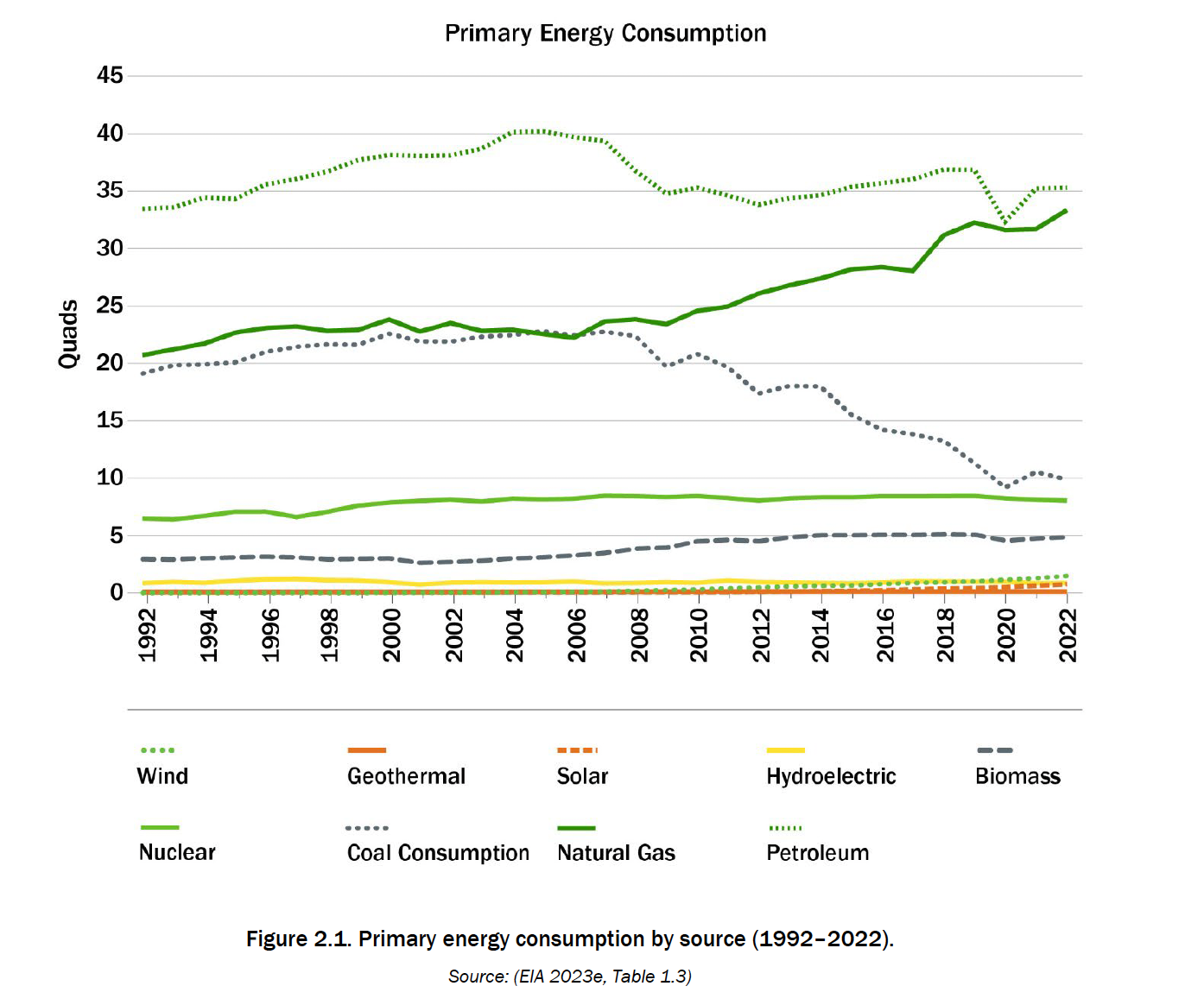
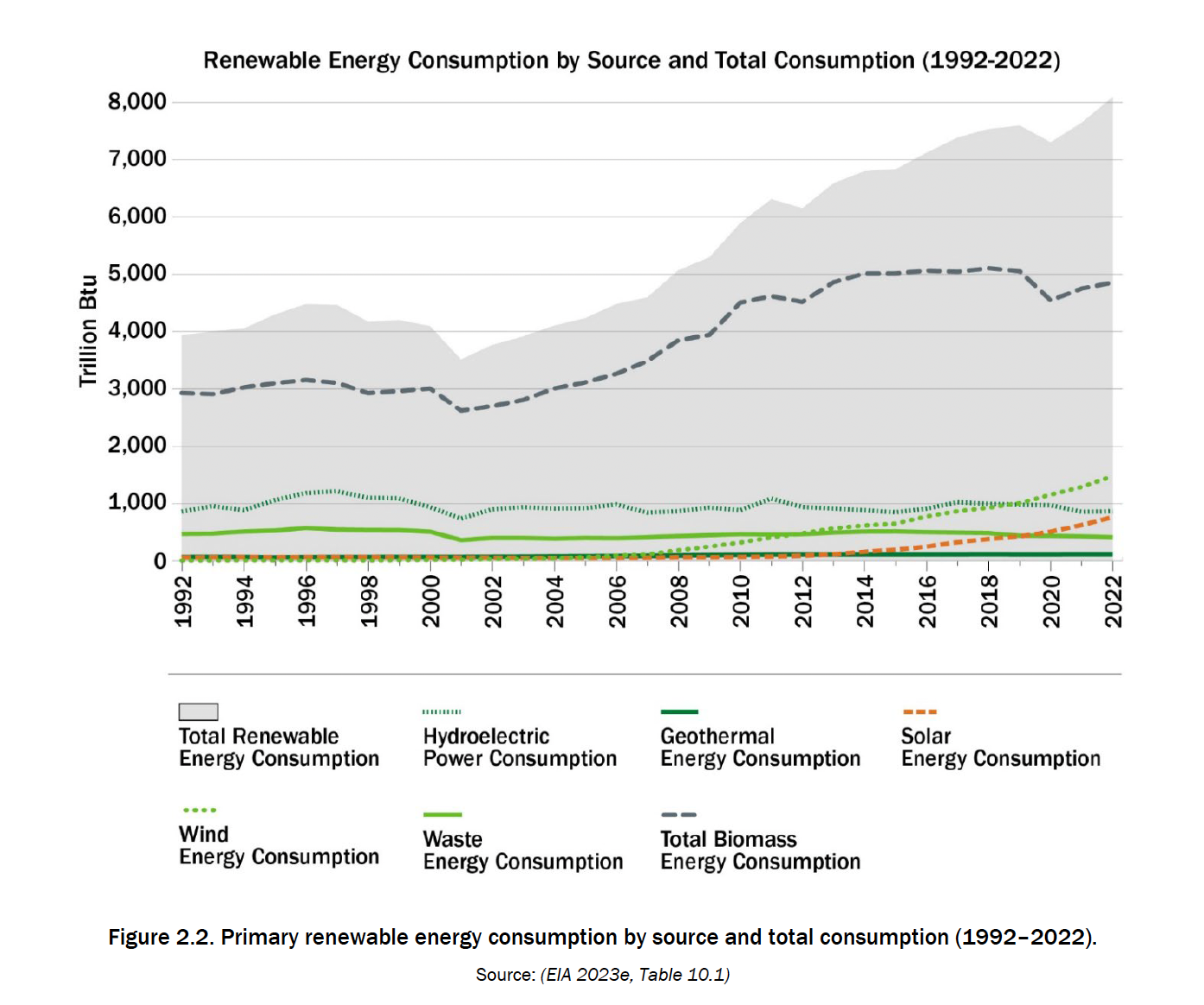
In 2022, the U.S. Energy Information Administration (EIA) estimates that 18.7 billion gallons[2] of biofuels will be produced and about 17.6 billion gallons consumed.
There is a more rapid increase in production of advanced types of biofuels due to the introduction and development of their technologies. Thus, according to the US Environmental Protection Agency (EPA), in 2022, compared to 2014, the growth in production volumes of renewable diesel fuel amounted to 813%, renewable jet fuel/solid aviation fuel (SAF) – 912%, gasoline blending component /bio-oil – 424%, biogas and other renewable gases – 1100%.
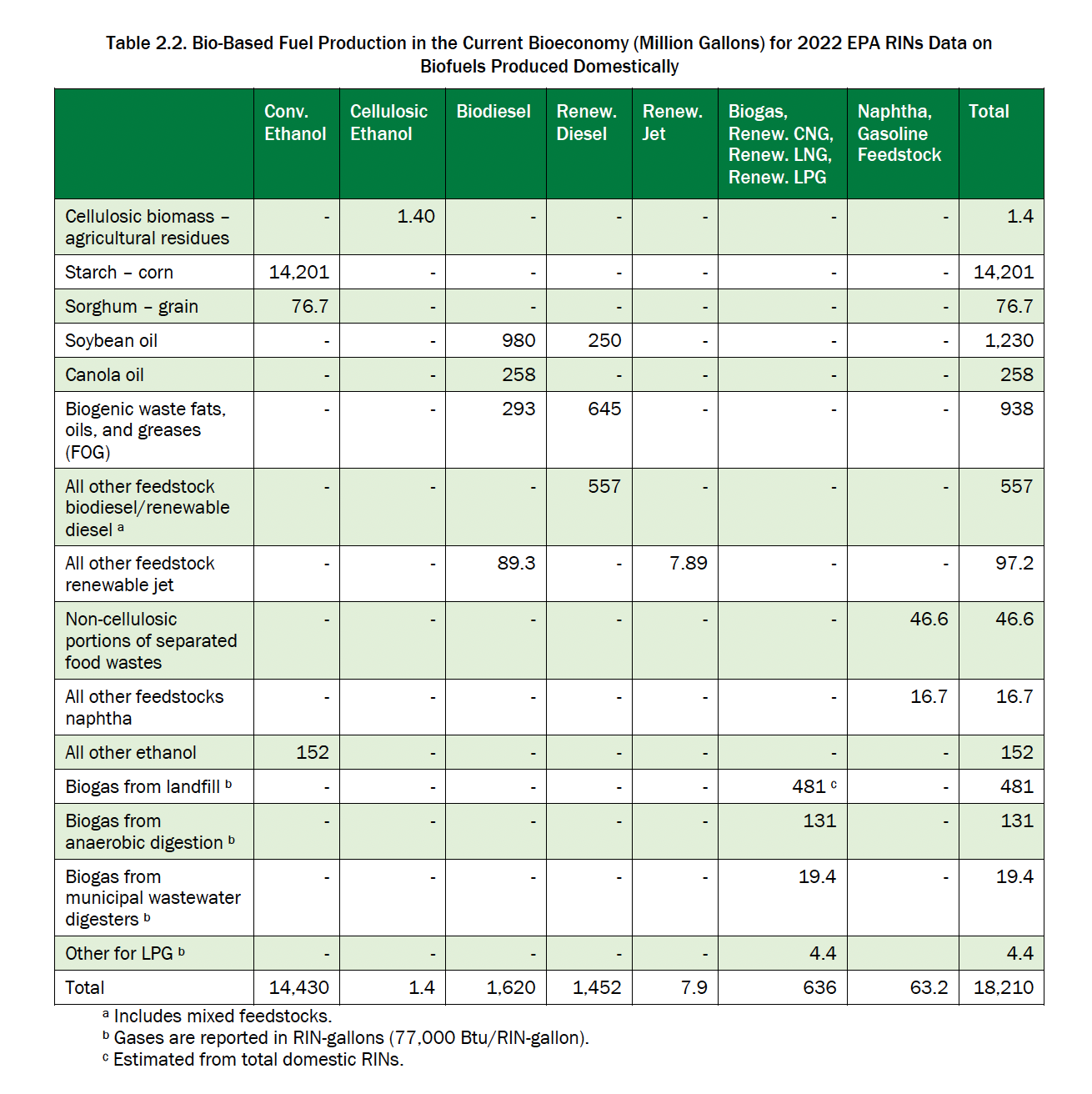
According to the EIA, fuel ethanol production was 15.4 billion gallons, and its consumption in the transportation sector was 14.0 billion gallons, where most of the fuel ethanol is blended with motor gasoline (finished).
Biodiesel is the second-largest biofuel in the U.S. after fuel ethanol, and renewable diesel is third. In 2022, according to the EIA, domestic biodiesel production was 1.62 billion gallons and consumption was 1.66 billion gallons of biodiesel, representing 8.2% of biofuel consumption.
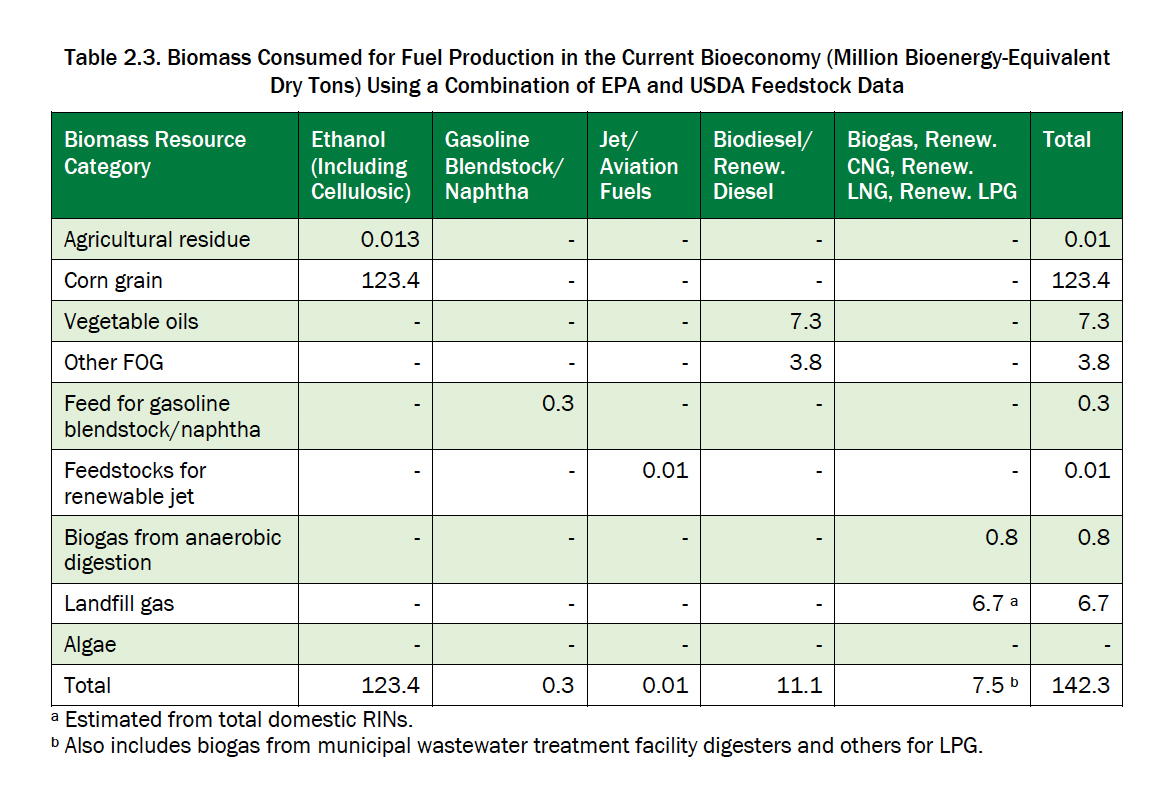
At the beginning of 2023, 93 dairy farms had digesters producing biogas for end use as LNG, as well as additional pipeline gas operations.
Comparing recent data, electricity production from wood/wood waste has decreased from 0.4 EJ in 2014 to 0.3 EJ in 2022, and heat production from wood/wood waste has decreased from 1.6 EJ in 2014. to 1.3 EJ in 2022.
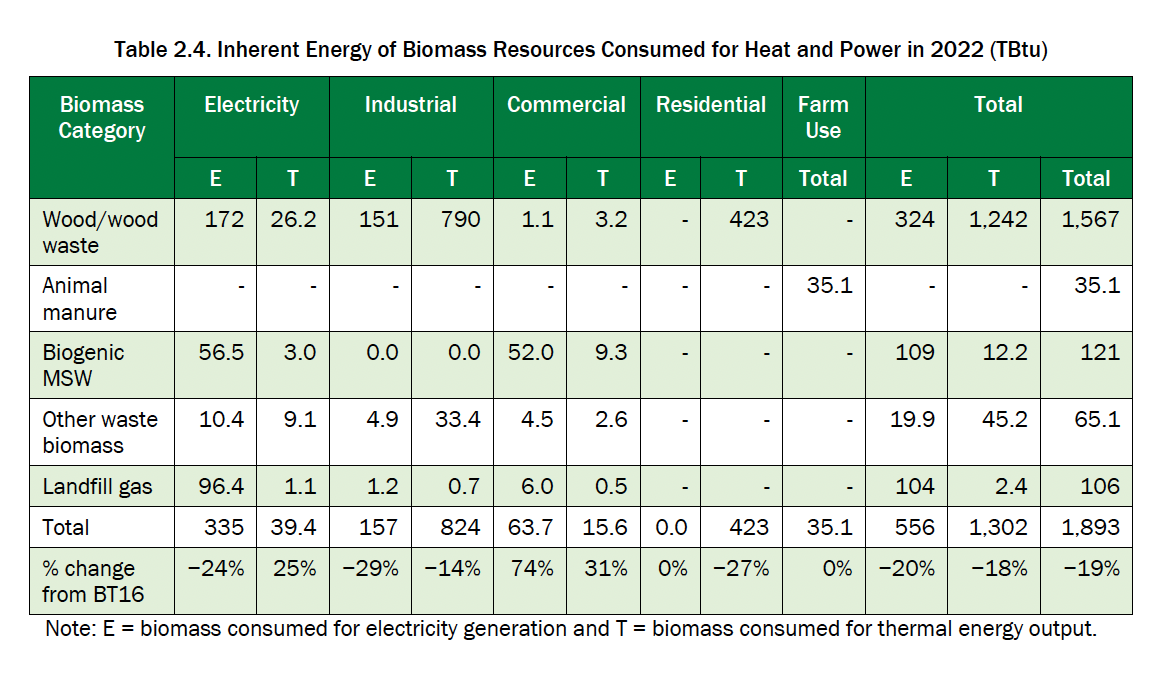
Compared to the BT16 report, the total annual biomass currently consumed for the production of biofuels for transport and heat and electricity has decreased by 18 million tons (6%). At the same time, the production of biofuels increased by 19%, consuming an additional 16 million tons of raw materials annually (11%), while the biomass used for the production of heat and electricity decreased by 35 million tons per year (19%), and the use of landfill gas increased by 36%.
Read more about it on the SAF platform: https://saf.org.ua/en/news/1917/.
We remind you that UABIO is a partner of the Sustainable Agribusiness Forum (SAF).
SAF is a communication platform that brings together agribusiness stakeholders and aims to establish strong links between market players and introduce sustainable approaches in agriculture. For this platform, our team prepares verified professional content on the bioenergy sector.

